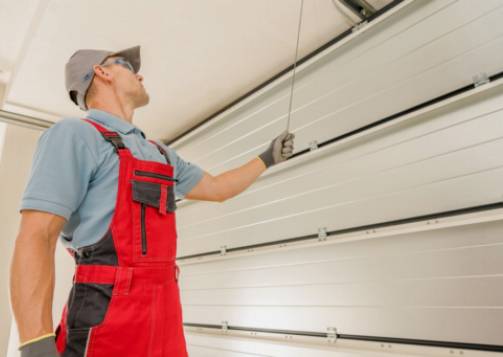Protect Your Belongings: The Importance of Insulating Your Garage Door
22 November 2025 by Ronnie K.As a homeowner, protecting your belongings and maintaining a comfortable living environment is essential. One area of the home that is often overlooked when it comes to insulation is the garage door. Insulating your garage door offers numerous benefits, including improved energy efficiency, decreased noise, and enhanced durability for your door. In this article, we will explore the importance of insulating your garage door, the different types of insulation available, and a step-by-step guide to insulating your garage door. Additionally, we will discuss how to maintain your insulated garage door for longevity, the cost considerations and energy savings associated with insulated garage doors, and how to troubleshoot common issues with garage door insulation.

Understanding the Benefits of Garage Door Insulation
Garage door insulation is an important aspect of home maintenance that is often overlooked. Many homeowners do not realize the benefits of insulating their garage doors, but it can have a significant impact on the comfort and energy efficiency of their homes. Insulating your garage door can help regulate the temperature inside the garage, which in turn can help maintain a more stable temperature in the rest of the home. It can also help reduce noise from outside and improve the overall durability of the door. Additionally, insulating your garage door can also provide some level of protection for your belongings stored in the garage. Overall, garage door insulation is an important investment for homeowners looking to improve the comfort and energy efficiency of their homes.Types of Insulation for Your Garage Door
When it comes to insulating your garage door, there are several options to consider. The type of insulation you choose will depend on factors such as your budget, the climate in which you live, and the level of insulation you desire. Some common types of insulation for garage doors include:1. Reflective Foil Insulation: This type of insulation is made of layers of aluminum foil and plastic air bubbles. It is lightweight and easy to install, and it works by reflecting heat rather than absorbing it.
2. Fiberglass Batt Insulation: Fiberglass batts are made of tightly woven strands of glass fibers and are typically installed between the garage door panels. This type of insulation is effective at reducing heat transfer and is relatively affordable.
3. Polystyrene Foam Insulation: Polystyrene foam panels are a popular choice for garage door insulation. They are lightweight, easy to cut to size, and can be affixed to the inside of the garage door panels with adhesive.
4. Polyurethane Foam Insulation: Polyurethane foam is a high-density insulation material that is sprayed onto the inside of the garage door panels. It expands to fill the space and provides excellent thermal resistance.
5. Cellulose Insulation: Made from recycled paper fibers treated with fire retardants, cellulose insulation is blown into the garage door panels. It is an eco-friendly option that provides good thermal performance. Ultimately, the type of insulation you choose for your garage door will depend on your specific needs and preferences. It's important to consider factors such as R-value, ease of installation, and moisture resistance when selecting the right insulation for your garage door.
Step-by-Step Guide to Insulating Your Garage Door
Insulating your garage door is a simple and cost-effective way to protect your belongings and improve the overall energy efficiency of your home. Here is a step-by-step guide to insulating your garage door:1. Measure the panels: Start by measuring the width and height of each panel on your garage door. This will help you determine how much insulation material you will need.
2. Choose the right insulation: There are a few different types of insulation that you can use for your garage door, including foam board, reflective insulation, and fiberglass batt insulation. Choose the option that best fits your budget and needs.
3. Clean the garage door: Before installing the insulation, make sure to clean the inside of the garage door panels to remove any dirt or debris.
4. Cut the insulation: Use your measurements to cut the insulation material to fit each panel on the garage door. Make sure to leave some extra material around the edges to ensure a tight fit.
5. Install the insulation: Place the insulation material onto the inside of each panel, making sure to press it firmly against the door. Use double-sided tape or adhesive to secure the insulation in place.
6. Add a vapor barrier: To further protect your garage from moisture and drafts, consider adding a vapor barrier over the insulation material.
7. Test the door: Once the insulation is installed, test the garage door to ensure that it still opens and closes properly. Make any necessary adjustments to the insulation to ensure that it does not interfere with the door's operation. By following these simple steps, you can effectively insulate your garage door and enjoy the benefits of a more comfortable and energy-efficient home.